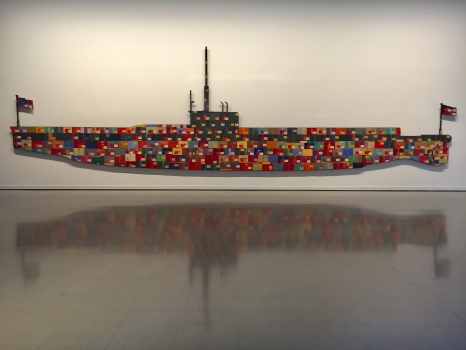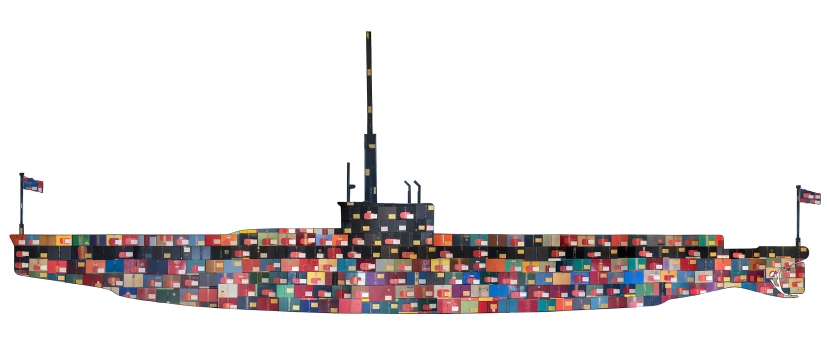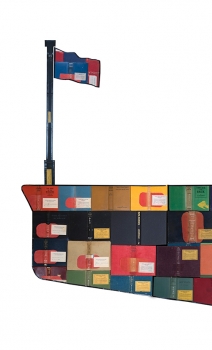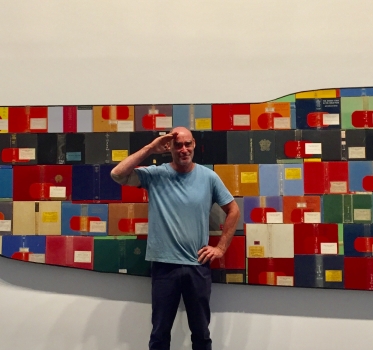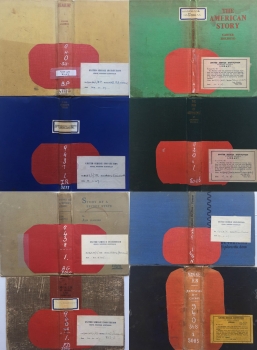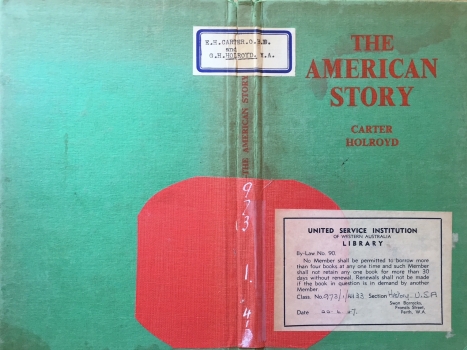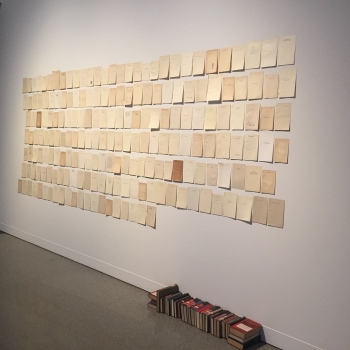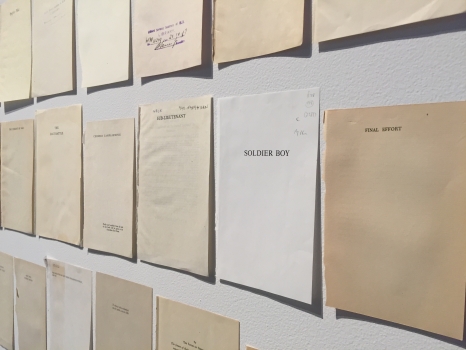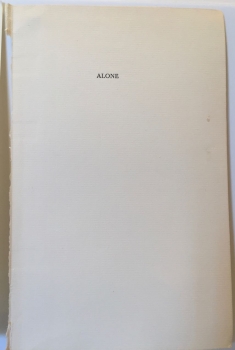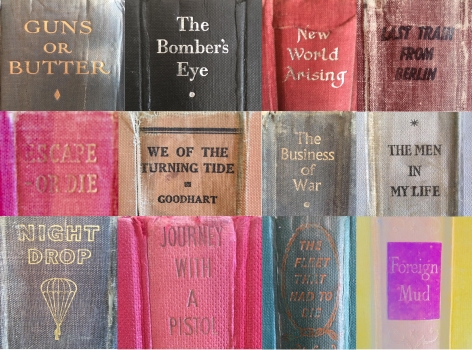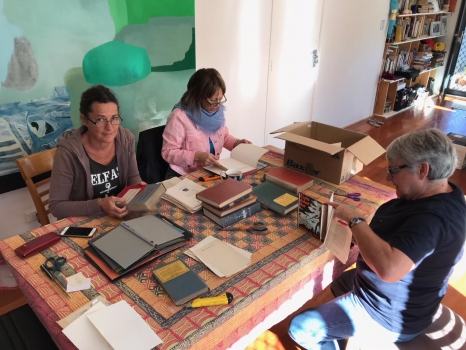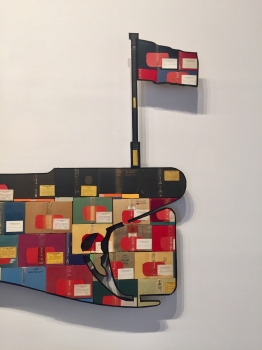WARSHIP- the Glorious Decline of the Officers’ Library
WARSHIP- the Glorious Decline of the Officers’ Library
An installation by Jo Darbyshire
At John Curtin Gallery, Curtin University, WA
21 October 2018 - 10 March 2019
(opens for PIAF festival exhibition 12 Feb)
Listen to an artist interview (16.6.2019) between myself and Andre Lipscombe about this exhibition on the Art Collective Website: https://soundcloud.com/user-817124869/jo-darbyshire-the-glorious-decline
This installation is now displayed at Shenton College, Shenton Park, WA
Video for Australian National Submarine Museum: https://ansmpilot.org.au/explore/art/
This large-scale 14 metre long installation is made in the shape of the AE1 – the first Australian Submarine- built in 1913. The submarine along with its 35 crew disappeared later that year, while on patrol near New Guinea, and after being lost for 103 years was discovered again in 2017.
The installation is made from over 300 book covers, ‘rescued’ from the United Service Institution of WA Library (a library belonging to Officers of the Defence Forces at the Perth Barracks) that was disbanded a few years ago and was going to be sent to landfill.
The exhibition is about memory- the very human act of forgetting, and selective remembering and the artist draws attention to the books as being both visually and historically intriguing conduits for this.
The ‘found’ books were nearly all about War: the many wars in history and especially about the first and second world wars, the countries involved and the aftermath of war. The most poignant, for the artist were books written by individuals about their own war experiences, and written in the hope that ‘we never forget the horrors of war’. These books about the past have a haunting resonance given recent heightened nuclear tensions between North Korea and the USA.
The installation explores the aesthetics and provenance of the book covers, highlighting the absorbing titles, textures, colours and fonts, that speak so resonantly of the 1930s, 40s and 50s. The elements of an archival system are also visible in labels and handwritten catalogue numbers. Other marks show the signs of use: of being held and handled, of being considered and valued. In their materiality they tell a story that cannot be told in the same way by digital media. The book itself is a form of collective remembering, as the many who handle and read it add to its wear and tear; and like an aged body, this encourages an attitude of respect and empathy.
The artist draws our attention to the fact that for a variety of reasons, many of our cultural institutions are currently acting both clandestinely and openly to dispose of large numbers of books. She acknowledges that in questioning this practice and creating this artwork, with cruel irony, she herself has had to destroy books.
Acknowledgments:
The artist wishes to acknowledge the support of sponsors:
The State of Western Australia through funding from the Department of Local Government, Sport, and Cultural Industries, Culture and the Arts (WA)
Director Chris Malcolm, Jane King, Xavier Pardos, and staff, John Curtin Gallery
Miranda Smith, Managing Director Gallery 360 https://www.gallery360.com.au/
Thank you to the many people involved in this project:
Curator Robert Mitchell, Army Museum of WA
Nigel Darbyshire, Ned Darbyshire
Mr Bob Trotter OAM, National President, Submarines Association Australia
Historian Susan Murray
Liz Wood, Helen Idle and Joan Leese, Suzi Wild and Gina Pickering
Nathan Giles, Perth Public Art Foundation
Felicity Johnson, Art Collective WA
Maggie Baxter, Alan Shortt
Photo: Eva Fernandez
